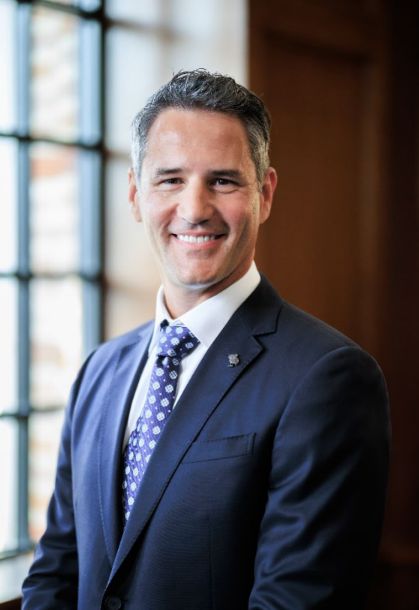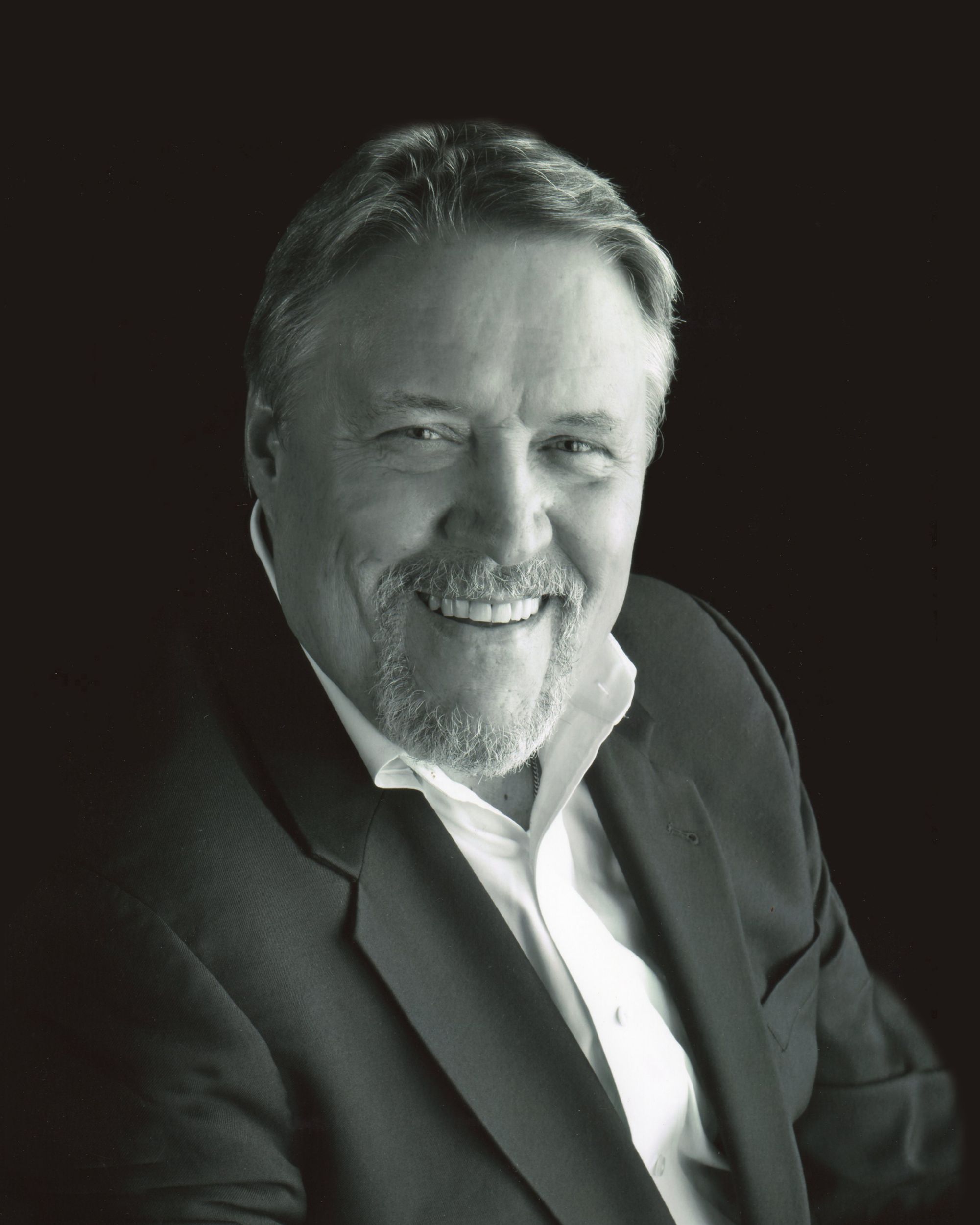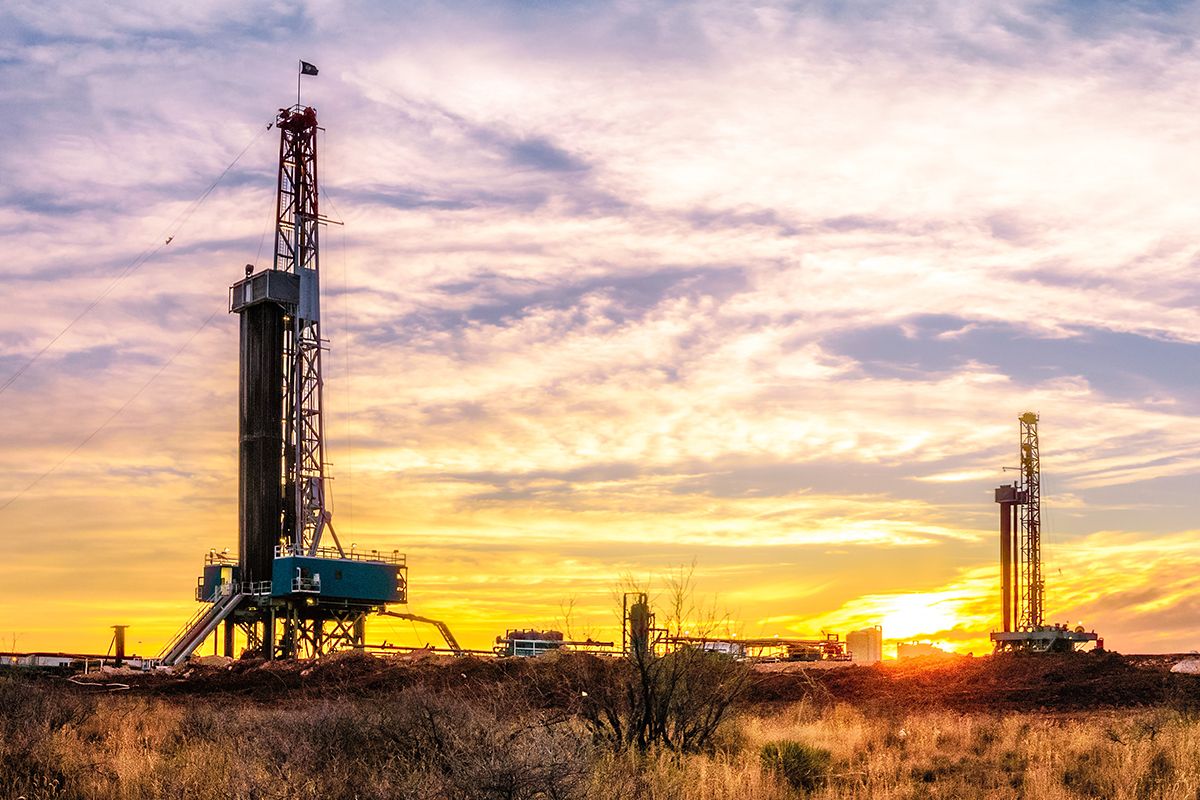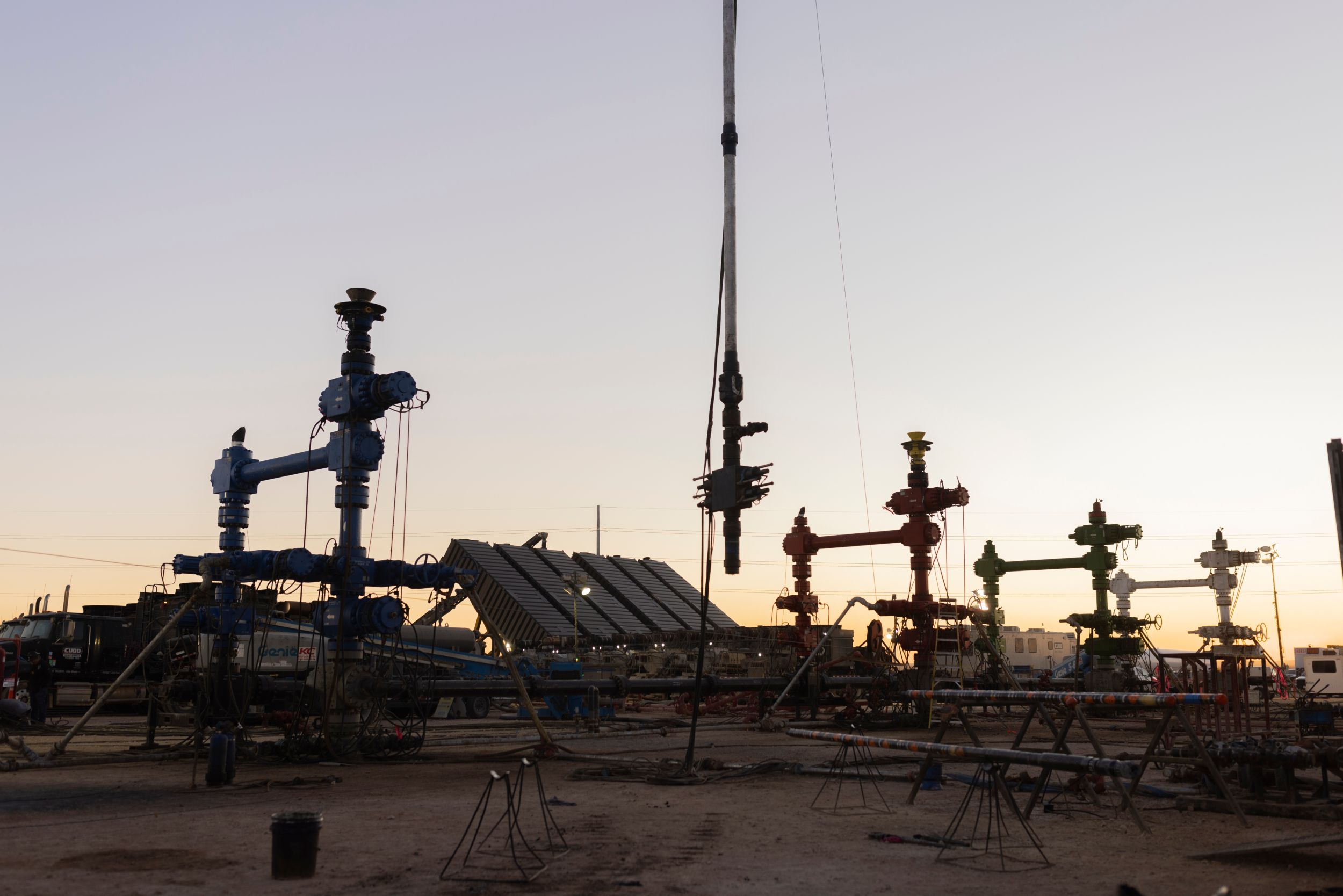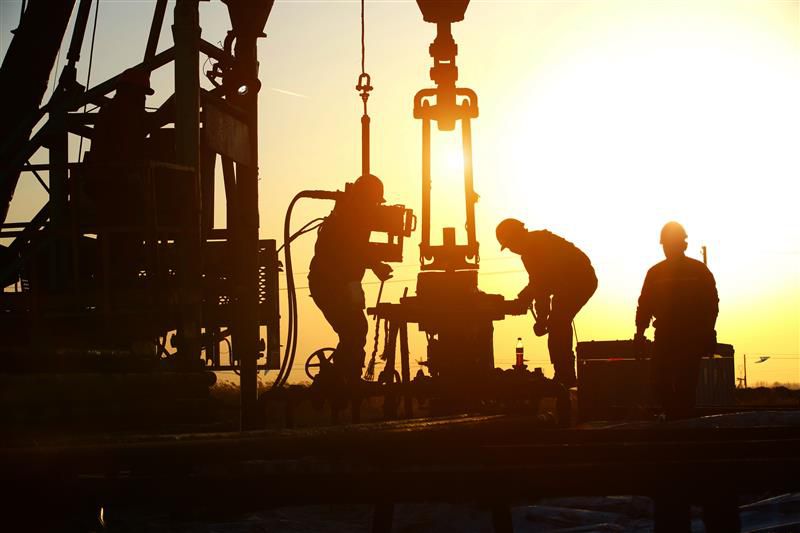00:00:00 Announcer
This episode of The Energy Pipeline is sponsored by Caterpillar Oil & Gas. Since the 1930s, Caterpillar has manufactured engines for drilling, production, well service and gas compression. With more than 2,100 dealer locations worldwide, Caterpillar offers customers a dedicated support team to assist with their premier power solutions.
00:00:28 Announcer #2
Welcome to The Energy Pipeline Podcast with your host, KC Yost. Tune in each week to learn more about industry issues, tools, and resources to streamline and modernize the future of the industry. Whether you work in oil and gas or bring a unique perspective, this podcast is your knowledge transfer hub. Welcome to The Energy Pipeline.
00:00:52 KC Yost
Hello everyone, and welcome to this episode of The Energy Pipeline Podcast. Today, we'll be discussing all things coating. This includes a bit of field joint coating history, energy industry headwinds and tailwinds, and where coating technology is taking us today in the energy industry. Our guest is Stuart Wilson, senior Vice President Western Hemisphere Field Joint Coatings at Seal For Life Industries. That's a heck of a title, Stuart. Welcome to The Energy Pipeline Podcast.
00:01:25 Stuart Wilson
Thanks, KC. Thanks for inviting me in. It's a pleasure to be on the show. I wonder after that introduction, if we've got any time left for questions.
00:01:36 KC Yost
Senior Vice President Western Hemisphere Field Joint Coatings. There, I did it right. That's a good title. We'll just call you VP. I will say that with your Scottish accent, I've got to throw in that 15 years ago when I was working for another company, whenever I heard someone with a Scottish accent, I knew to be very nice to them because they very well could be my boss.
00:02:03 Stuart Wilson
We're everywhere. We're all over the world. I think it's because the weather's so bad back home.
00:02:10 KC Yost
Well, welcome to Houston, welcome to Houston. Oh, and glad that you're here, glad that you're here. I've been looking forward to this topic for a long, long time. I do have some history when it comes to coating field joints, and hopefully we get to talk about that a little bit. But before we start talking about coatings, take a few minutes if you would please and share your background with our listeners, okay?
00:02:33 Stuart Wilson
Sure, sure, sure. Thanks for the intro there. Actually, funnily enough, I've been in the energy field now for precisely 20 years.
00:02:43 KC Yost
Congratulations.
00:02:44 Stuart Wilson
And three days. So joined a pipe coating company, which you may know called Bredero Shaw back in mid-November 2004 as my first real job really coming out of mechanical engineering back in Scotland. And have you ever seen a pipe coating factory?
00:03:05 KC Yost
I have, I have. Pretty amazing.
00:03:07 Stuart Wilson
Okay, so you know a little bit about the environment I grew up in then. It's a rough neck, dirty environment, akin to a construction site with huge yards where pipes are stored and giant rotating equipment used to handle and convey pipe sections and then various apparatus to apply coatings to pipe at quite high capacity.
00:03:30 KC Yost
If a guy walks in with a suit and tie on to one of those plants, you know he doesn't belong.
00:03:36 Stuart Wilson
You described my first day. I never did it again. So pretty much an engineer's dream job. And since then I've had the great privilege of an international career spanning over a dozen roles in six countries, including Norway, Canada, the UK, Singapore, Italy, and now here in the United States, which has been home for the last nine years. And that's the great thing about oil and gas, I think, and energy in general. You can see the world while you work. I think there's a great sense of pride that I have being involved in the construction of that critical infrastructure and all those pipelines around the world that benefits the communities where you're working, knowing that you're making a difference and helping raise the standard of the living by doing your job well. So look back on that with a sense of pride. And now fast-forward to today. After all those countries now look after a division of Seal For Life that manufactures coatings and sealants for critical infrastructure, including oil, gas, and water pipelines and facilities as well.
00:04:48 KC Yost
So you basically take care of the Western atmosphere for Seal For Life?
00:04:51 Stuart Wilson
Yeah. And there's a history to that. So back in 2020, the division I was running at the time, Canusa-CPS was acquired by their competitor under private equity platform. Seal For Life Industries acquired Canusa-CPS, and we were both me and my counterpart, Dirk Tauté. So shout out to Dirk, who's in Belgium. We were both running global businesses and it didn't really make sense to overlap each other. So he was in Belgium, he took the east. I was in Houston and I took the West.
00:05:26 KC Yost
Perfect.
00:05:26 Stuart Wilson
And that's how I ended up with such a long title.
00:05:33 KC Yost
You mentioned a company name that I fondly remember Knutson and how thrilled I was when Knutson and the shrink sleeves came out and we're going to be talking about the different types of coatings, but that was wonderful technology to come out at the time. I know that you and I visited about the history and me Granny Ragging pipe and standing on top of a 36-inch pipe with a 10 gallon bucket of 450 degree coal tar, pouring it down at 12 o'clock and two guys on either side with felt wrapping, going back and forth to get that coal tar down to six o'clock, and then wrapping the pipe. That was called Granny Ragging back in the mid and early seventies and how excited we were when Knutson came out with their shrink sleeves. And we didn't have to do that Granny Ragging. Understand, I was totally protected from that heat by wearing asbestos hoodies and gloves. I'm avoiding one hazard and walking right into another hazard. But anyway, shout out to Knutson. I was never so happy to see shrink sleeves. Come on online. Yep.
00:06:53 Stuart Wilson
Yeah, the industry's come a long way since those days. I will add that the hot dope that you used, you've educated me about Granny Ragging. Thank you. But that remains a pretty effective coating, but not a healthy and sustainable way to be doing business today.
00:07:12 KC Yost
Well, so what the company did was basically find a 22-year-old fresh green engineer right out of college to do it. "Sure, I'll do it. Why not?" Little did I know what they were volunteering me for. So anyway, but good experience. Good experience. That was a great time.
00:07:34 Stuart Wilson
I'm sure the jobs only got better from there.
00:07:36 KC Yost
Oh, they did did. They did. They did. So anyway, shout out to Knutson. So now, Seal For Life was earlier this year acquired by a company called Henkel. They're out of Germany, right?
00:07:49 Stuart Wilson
That's right.
00:07:50 KC Yost
So can you tell us about the relationship of Seal For Life and Henkel now?
00:07:56 Stuart Wilson
Yeah, sure. It's nice to go back into the history and see how we've merged lanes. So Seal For Life's history dates back 70 years to the advent of Polyken tape, which was developed by the Kendall Company to displace coral tar enamel in some of the Granny Ragging practices we just talked about. And that was really a change from essentially blending hot materials in the field to manufacturing material that can be applied with efficiency and is factory made under stable conditions. And so Polyken continues to hold a strong spec position to this day due to the kind of rugged and harsh conditions and how durable that material is in those situations. But since then we've grown our technology to include anti-corrosion coatings. We've got maintenance and repair coatings for assets and corrosive atmospheres. We've got intumescent coatings, floor coatings, we've got coatings that can be applied underwater, and even coatings that can self-heal when damaged. And so we've come a long way from those Polyken days, including the introduction of heat shrink sleeves in the fifties and sixties through two brands, Covalence and Knutson CPS, as you mentioned. Now, the Henkel Corporation of Germany, which has also got famous brands such as Loctite, for example, acquired us in April of this year to expand their access into heavy critical infrastructure. Henkel was founded in 1876 when Fritz Henkel marketed a universal silicate-based laundry detergent, and that overcame the kind of cumbersome need to proportion and mix chemicals at home to do your laundry. And that detergent now came conveniently in one pre-mixed product. And so that's really how Henkel started. And so here we are 150 years later from that point, and the two companies that are founded on kind of novel chemistry driven by that solution mentality have come together at last. So that is the kind of background of the two companies and how we've recently come together under one family.
00:10:20 KC Yost
So are you guys still on your honeymoon?
00:10:22 Stuart Wilson
Yes. Well, there's a lot that goes on in mergers and acquisitions. The organization goes through an incredible amount of change, but we couldn't have had a warmer welcome by Henkel and the team there. And they really understand the technology and the products that we use. And so we have had a very, very good landing with Henkel and are very excited about the growth and potential together as one company.
00:10:51 KC Yost
Great, great, great. So let's talk about Seal For Life. I worry about pipelines, pipelines, and pipelines, right? That's kind of been my life. Our sponsor, Cat Oil and Gas is pretty much E&P production, that type of world. And I get it, but the offering of products that you guys have cover just a wide range of industries and applications, right?
00:11:24 Stuart Wilson
Yeah. We have quite a breadth of solutions available under that critical infrastructure blanket.
00:11:33 KC Yost
Well at the end of the podcast, we'll get people to go to your website and they can learn all about what's going on there. Okay. So let's talk about the industry. In my 48 plus years in the energy industry, and my father's 35 years prior to that and my grandfather's 45, 46 years prior to that, we've seen the energy industry be quite cyclical up and down and up and down. And so you guys, at least from our perspective of pipelines and pipeline infrastructure and construction and all of that are looking at the industry, right? Are you seeing some headwinds and some tailwinds that are pertinent to our discussion today?
00:12:27 Stuart Wilson
Oh, absolutely. I think anyone in the industry knows it's not for the faint-hearted. We're subject to quite significant cycles as you mentioned there, KC. It's a bit like my golf game. You're never quite sure what's going to happen next. And we find today ourselves is no different.
00:12:46 KC Yost
By the way, I just want to make sure that someone notices out there that you're from Scotland and you said that your golf game wasn't up to snuff. All right, okay. All right. I don't think I've ever heard that from a Scotsman before.
00:13:00 Stuart Wilson
It's probably all the sunshine. I'm not used to it.
00:13:03 KC Yost
Okay, go ahead. Sorry, go ahead.
00:13:06 Stuart Wilson
But yeah, certainly there are a few. I think on the bright side, the headwinds are largely temporary in nature and the tailwinds are long-term and fundamentally strong. So a couple of key points I would touch on. Firstly, in the wake of hyperinflation, and let's face it a fair amount of geopolitical instability worldwide, I think it's understandable that there's sort of trepidation or uncertainty around demand. Is the US economy going to head into recession? Is Chinese demand going to recover? What's the impact of potential tariffs on demand and the energy industry as a whole? So I think those are the kinds of questions that are going through people's minds that manifest themselves as sort of hesitation on financial investment decisions or whether or not a project should go ahead now or later. And as we know, it takes a lot of money to build the infrastructure needed to supply energy around the world. And so there needs to be confidence in the economic models that underpin that investment. And volatility breeds indecision unfortunately. So I think that's short-term. The next thing, I think we've seen warm winters and oil and gas production coming out of the Permian as an all-time high. So we've seen high natural gas inventories and low gas prices. And so that combined effect is oversupply of natural gas, low prices, that's not helped by the takeaway constraints that have led to more and more frequent negative trading days in the Waha Hub than ever before. So build more pipelines folks is my message. I think that is certainly coming over the next five years. One thing that's quite different today than it was five years ago is midstream capital spending. We're in pipelines, we like to transport, we'd like to transport energy from the point of supply to the point of demand. Using pipelines is the most efficient and safe way to do that. But since the COVID-19 pandemic, energy operators have exhibited a different approach to business altogether, something the pundits are calling capital discipline. Midstream operators are paying dividends or rewarding investors buying back shares to use excess cash and boost share value. And particularly as those markets rebounded after the pandemic, that was the smart thing to do. But that means that that cash isn't going towards investing in new pipelines. And so we've seen a lot of consolidation in the midstream space where operators are buying infrastructure, not building it. And I think that's okay short term, but that can't last. The fundamentals of energy demand are going up and we are going to need more and more supply. I mean, think about just LNG as one example. All that infrastructure that's being built in the Gulf Coast, that requires the feed gas to be plumbed into those facilities, which in turn is going to drive pipeline. So again, I think that's temporary.
00:16:23 KC Yost
I got to visit with Omar Garcia with the Port of Corpus Christi a few weeks ago, a great guy, super conversation. And he was talking about how the Port of Corpus Christi is the largest port in the world for energy export, but that all of the pipelines that run into the Port of Corpus Christi are at 90% capacity. Now, there are other pipelines or one other pipeline that is planned, but it's already committed to near capacity. So like you're saying, the investment hasn't been there to take advantage of the demand that seems to be out there. It's just straight from him as well.
00:17:17 Stuart Wilson
That's exactly right. And that's why we see those negative trading days at the Waha Hub because when you produce, oil and gas needs to flow, it's very expensive, particularly gas is expensive to store. And so if Kinder Morgan or any other midstream operator have to shut down a pipeline to work on it, then the highway gets backed up and there's nowhere to store it. And so the gas operators, ENPs, then have to pay people to take it. If you think about the negative trading of paying somebody $5 per million BTU to take gas, and at the same time Europe is at $5 to $7 per MBTU to use it, that's quite a supply demand imbalance that has to be solved with energy infrastructure. And again, I think that's why this is a temporary concern.
00:18:08 KC Yost
And there are a lot of experts out there, Dr. Tinker comes to mind, that shows that there is a direct correlation between energy availability and economic stability and growth that if you want a particular area of the world to grow, get energy to them and they can start to grow and prosper. It is a very interesting correlation and to your point.
00:18:38 Stuart Wilson
Yeah, absolutely. I think we have to realize that the world in general is still in energy poverty. And so we're in Mother Earth and the reserves are in certain areas of the world and they need to be the point of supply and they need to be transported to the point of demand. So Europe is resource light, Japan is resource light, Asia is resource light, and we've got secure sources of energy in North America, in Argentina, in the Middle East, in Northwest Shelf Australia, and they all need transported to where these regions of energy poverty occur. So that has to happen through a combination of infrastructure, including pipelines.
00:19:33 KC Yost
Good, good. So let's switch the topic and start talking about technology. You talk about the industry's perpetual conundrum. Can you explain what you're talking about there?
00:19:49 Stuart Wilson
Yeah, that conundrum I sometimes refer to as the asset owner's conundrum, and it starts during the capital investment cycle of an asset where an engineer makes choices on design and materials to fit within a certain budget and within a certain design life. And you know this game more than I do KC, where more often than not that asset operates well beyond that original design life and then that ends up in the reliability engineer's lap with a portfolio of aged assets and a maintenance demand that exceeds their available resources. So how do we solve this? This is the asset owners conundrum. Well, from our perspective at Seal For Life, we have to create a coating that can be installed cheaper, last longer than the alternatives, and be used as a maintenance coating to increase the time between repair and re-repair. And that's what we've done with our viscoelastic technology called STOPAQ.
00:20:56 KC Yost
Yeah, go ahead. Well, before we get into that, I don't know if... Again, I'm full of stories, but so when my dad got back from the South Pacific, he went to college, got an engineering degree, went to work for the local gas company. His first job was to work on construction, and his job was to take a steel brush and brush off pipe and then slap some coal tar on it real quick before the foreman came by and shoved it in the ditch. And I said, "Well, how long did it take for the coating to cure?" And dad said, "I have no idea. He was throwing it in the ditch as soon as I finished painting it on, it wasn't cured and all of that." So when you talk about your viscoelastic technology, does the curing time come into play in curing part of that issue that my dad wished he'd had back in 1951?
00:21:54 Stuart Wilson
Yeah, well, it's interesting because part of the constraint of conventional coatings today is in fact waiting for them to cure. The viscoelastic family of coatings never actually cures. They don't age. So it's quite-
00:22:10 KC Yost
Really?
00:22:10 Stuart Wilson
Yeah, it's quite a phenomenon to get your head around because as coaters, we're taught to be very, very stringent on surface preparation and make sure that we get mixed ratios correct and application temperatures correct and make sure that we have adequate curing and check for curing while this new generation of technology called viscoelastics does not cure. And that has several advantages including not aging. So they don't become brittle and they don't crack over time. They stay in cold flow form for the duration of the coating and the acid's life.
00:22:50 KC Yost
So how does it overcome gravity? How does it keep from flowing from 12 o'clock down to 6 o'clock?
00:22:55 Stuart Wilson
Yeah. Well, we put this in a very careful construction and actually envelop it in a system, which includes a combination of the formulations we use and all the magic stuff we put in there, but also the mechanism by which we apply it, which is on a mesh reinforced backing, and that mesh holds the material together. And then we apply a system, whether that be an outer wrap or an overcoat on top of it, which holds everything in place and actually provides hoop stress around that compound so that if that system is ever punctured or damaged, it actually flows over itself and self-heals. So think about that for a second.
00:23:39 KC Yost
Yeah, so how many layers are we talking about?
00:23:42 Stuart Wilson
Typically, we'll put two on, but we can have multiple layered systems depending on the situation and the mechanical strength of that outer layer system that's required. If it's high abrasion or high wear, then we may put some additional reinforcement around it.
00:24:01 KC Yost
And how many mils thick?
00:24:06 Stuart Wilson
Oh, we can provide different layers of systems, but I'm going to have to get back to you on that technical.
00:24:15 KC Yost
12 to 14 mils. I mean, FBE was standard 12 to 14 mils for a long time, right? Guess it still is?
00:24:21 Stuart Wilson
Yeah, it's thicker than, let's say a single layer fusion bond epoxy and less thick than like a three-layer system.
00:24:34 KC Yost
Oh, okay. All right. Well, I get that then. I was just trying to figure out if it's self-repairing, it's got to have some level of thickness in order to be able to do the repair.
00:24:51 Stuart Wilson
Yes. So there is an element of the compound, let's say under pressure because of the outer coating that provides that hoop stress and that volume of coating when punctured will flow to a certain extent, but not empty, will still remain encapsulating the substrate.
00:25:10 KC Yost
I see. I see. And then you can put an ARO that's an abrasive resistant outer wrap?
00:25:18 Stuart Wilson
That's right. Abrasive resistant, yep.
00:25:21 KC Yost
ARO, yeah, overlay over top of this to protect it, right?
00:25:27 Stuart Wilson
That's right. Yeah. We have technology that we use where it can be reinforced composite polyurethane, for example, that we put over the top and that's wrappable out of the bag, a vacuum-sealed bag, and we simply wrap and moisture cure that over the top, and that'll give it all the abrasion resistance it needs to survive on the acid.
00:25:51 KC Yost
And still give it elasticity?
00:25:54 Stuart Wilson
Yeah, so the more we reinforce the outer wrap, the more we compromise on flexibility, but we have a range of different options there.
00:26:06 KC Yost
I remember my first experience with AROs, where in the Houston Ship Channel, I was part of a team that replaced sixty-some odd pipelines as the channel was deepened and widened. And I believe that was the first application of an ARO being sprayed on top of an FBE for installation so that the pipes could actually touch and rub each other together without damaging each other as compared to the old directional drill where we'd put doughnuts on, which were just little round donuts that we fit on each pipeline to keep the pipeline separate, which means that you drill a bigger hole for the directional drill and pull back and you couldn't have as many pipelines in and all of that kind of stuff. So I mean, that was a heck of an advancement.
00:27:00 Stuart Wilson
Yeah, so we have ceramic filled epoxies and composite AROs, both of which are designed specifically for horizontal directional drill pull-throughs as well.
00:27:09 KC Yost
Cool. So this viscoelastic technology, how long has it been out?
00:27:15 Stuart Wilson
So it's been around since the eighties and Seal For Life that was a subsidiary of Berry Plastics actually acquired STOPAQ in the eighties. Actually in the early two thousands, forgive me. But STOPAQ came around in the eighties. It comes from the term stop aqua. Originally it was used as a sealant for things like wall penetrations on piping, which were used polyurethane foam traditionally, that then became brittle as the pipe expanded or contracted, warped or vibrated. And then that meant that the water for those wall penetrations would leak back through where those pipings entered the chambers. STOPAQ came around to stop that. It was a swellable compound and had that viscoelastic nature that allowed it to seal those pipe penetrations permanently. And then the great people at STOPAQ learned how to adapt STOPAQ and incorporate a polymer called polyisobutene, which gives STOPAQ its cold flow and honey-like adhesion mechanism. And that is a great anti-corrosion coating when in that formation.
00:28:33 KC Yost
Very cool. Very cool. So what other problems are customers overcoming with this technology?
00:28:41 Stuart Wilson
Yeah, it's a good question. Part of the amazing thing about this technology is we learned so much about the diverse applications and challenges it can solve, but we're still finding out more every year. But I'll give you a few examples. More and more offshore reserves are trading through things called floating production storage and offloading systems. So those are huge vessels out in typical marine tropical environments, very, very sensitive to corrosive atmospheres. And these vessels have anything from about a hundred to 350 kilometers of piping of one to six inch. They're giant refineries, robotic refineries, basically. And you can imagine the amount of surface area that's subject to corrosion. So the uptime of these vessels is incredibly important, and so taking them out of commission for a turnaround or a blast and recoat is time-consuming. So STOPAQ is a great solution to maintain those assets and arrest the spot corrosion in its place and keep the vessels operational for a long time. And that's something that we've taken into the wind market too, actually with Monopiles in these offshore conditions.
00:30:06 KC Yost
Oh, really? Okay.
00:30:08 Stuart Wilson
So there's one example. Another might be LNG liquefaction. They're going up everywhere in the Gulf Coast, the liquefaction facilities, the west coast of Mexico and Canada too, all over the world, in fact. And these facilities take that natural gas down to minus 260 F, which is for your international listeners, it's about minus 162 degrees C.
00:30:32 KC Yost
Yeah, I'm bilingual. I could have done that for you.
00:30:38 Stuart Wilson
And that requires a lot of cold insulation to keep that gas in a liquid state as it's transported around the facility and onto the LNG tankers. So whenever you have those cold surfaces, you have the possibility for condensation to gather and corrosion under insulation to happen. So we apply STOPAQ as a vapor barrier over that insulation layer and essentially keeping that annulus space free from any moisture and stopping and preventing corrosion under insulation from happening. One of the cool things about STOPAQ too is that it can be applied underwater using our wet substrate product. So this is very effective for splash zone rehabilitation where piling can become badly corroded over time. So that wet substrate product can also be applied on sweating pipelines where the temperature, the fluid inside the pipeline is below that ambient temperature and you get condensation present on that surface, so there's no blasting or heating required to apply STOPAQ. So to get that pipe above dew point so STOPAQ can be applied on those lines live while they're operational, preventing downtime.
00:31:54 KC Yost
Wow. Wow. That's amazing. That's amazing. That's amazing. Gosh, I probably got three dozen more questions and two dozen more stories for you, but we're running out of time here. So I guess I just want to see if there's anything else you'd like to add, anything you want to throw in there that we haven't talked about?
00:32:16 Stuart Wilson
I would just say that to all of our listeners, sometimes our industry and oil and gas and energy can be tarnished with a reputation like tobacco, like it's bad for our health. But let's remind ourselves that things like oil and gas pipelines are as critical as the rivers that provide our water, as the freeways that allow the supply of our food to our houses. Let's be proud about the industry we're in and the critical infrastructure that we provide to everyone around the world.
00:32:53 KC Yost
Great. I couldn't have said that better. Couldn't have said it better. I am a son of a son of a pipeliner, and I truly believe that the energy industry has so much to offer the world, and we need to be proud of what we're doing and how things are going. So great way to end the podcast. So anyway, Stuart, thanks so much for visiting with us today. What a great conversation.
00:33:24 Stuart Wilson
Absolutely, KC. My absolute pleasure. Thank you for having me in.
00:33:28 KC Yost
Sure. Sure. So if anyone would like to learn more about the latest protective coatings like STOPAQ. Am I saying that right? STOPAQ?
00:33:36 Stuart Wilson
That's right.
00:33:36 KC Yost
STOPAQ? For the energy and utility industries, you can find them on the web at sealforlife. com. That's S-E-A-L for F-O-R life L-I-F-E. com. SealForLife. com. So thanks to all of you for tuning into this episode of the Energy Pipeline Podcast sponsored by Caterpillar Oil and Gas. If you have any questions, comments, or ideas for podcast topics, feel free to email me at kc.yost@ oggn. com. I also want to thank my producer Anastasia Willison-Duff and everyone at the Oil and Gas Global Network for making this podcast possible. Find out more about other OGGN podcasts at Oggn. com. This is KC Yost saying goodbye for now. Have a great week and keep that energy flowing through the pipeline.
00:34:27 Announcer #2
Thanks for listening to OGGN, the world's largest and most listened to podcast network for the oil and energy industry. If you like this show, leave us a review and then go to OGGN. com to learn about all our other shows. And don't forget to sign up for our weekly newsletter. This show has been a production of the Oil and Gas Global Network.



